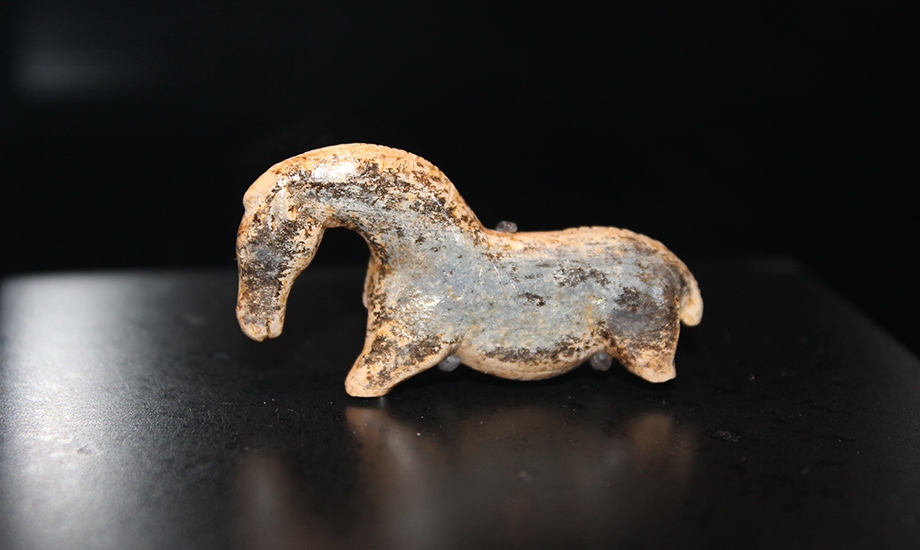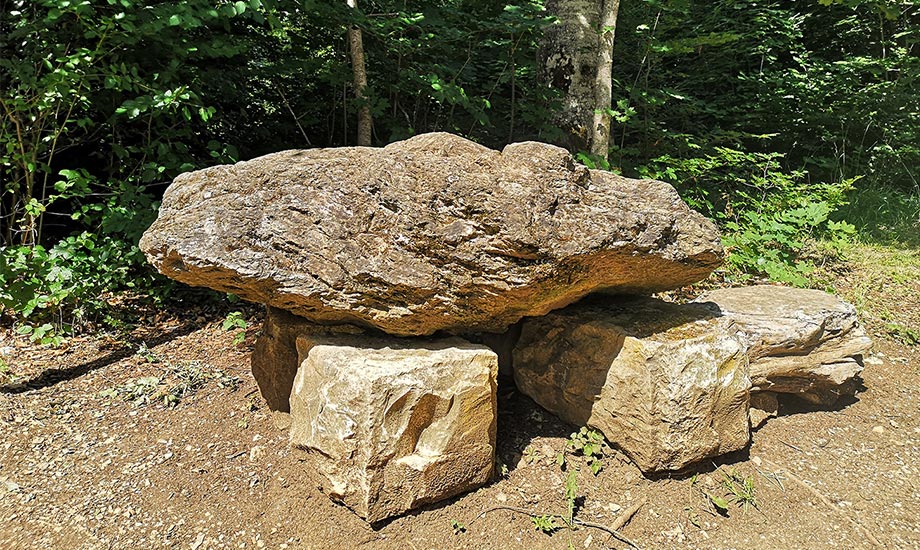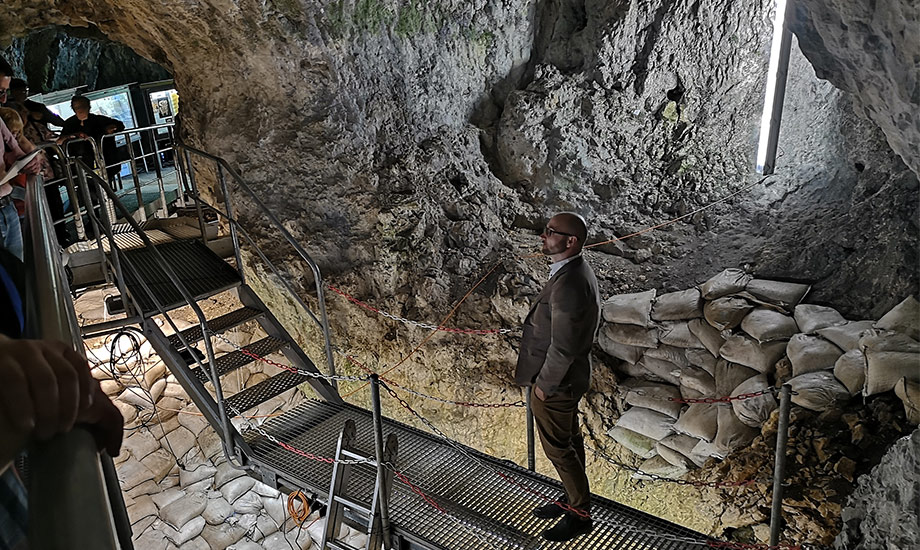Quartenary - Ice Age on the Alb
At the end of the Neogene Period 2.6 million years ago, a worldwide cooling occurred. The Quaternary Ice Age began and continues to this day: Since then, the Arctic and Antarctic have been covered with ice all year round. However, the "ice age" is not a period of permanently low temperatures. It is an alternating sequence of cold phases, when the ice spreads and covers the land with ice sheets thousands of meters thick, and warm phases, when it retreats again.
During the cold phases, thick ice sheets spread across Europe from the north. And from the south, the glaciers of the Alps reached far to the northwest. This can still be seen today in the moraine landscapes on the foothills of the Alps. The Alb lay predominantly in an ice-free corridor in between.
There is no evidence of glaciation on the Eastern Alb and the Middle Alb. Typical moraine deposits, such as pebbles and sand on the fields, are only found on the southwestern edge around Riedlingen and Sigmaringen. They testify that the ice from the Alps even spread here. Quite special is the Erratic Block near Laiz. The boulder (erratic block), which has been designated as a geopoint, was transported from the Alps to Sigmaringen by glacial ice. It has been there ever since and is still showing today how far the glacier reached during its greatest expansion over 300,000 years ago.
Large animals such as mammoths, woolly rhinoceroses, horses, reindeer, and cave bears lived in the steppe-like landscape, as did predators such as cave lions and hyenas. But the Ice Age is also the time when the first humans came to the region: Around 40,000 years ago, the first modern humans lived as hunter-gatherers in the Alb, Neanderthals tens of thousands of years earlier. Due to the particularly good preservation conditions in the Alb caves, objects of their lives and relics of the Ice Age fauna have been wonderfully preserved until today.
The finds of small carved art objects, such as the "Venus of Hohle Fels", the "water bird", the "lion man", the "Vogelherd horse" or the first flutes made of bird bones became famous. In 2017, this unique finding situation led to the designation of six caves in the Ach and Lone valleys as UNESCO World Heritage Sites "Caves and Ice Age Art of the Swabian Alb”.
For around 12,000 years, we have been living in a warm period with a temperate climate, the Holocene. In the last seventy years, however, we have seen an ever-increasing rise in average global temperatures. The term Anthropocene is being used more and more frequently for this most recent epoch, in which humans have a massive influence on the development of climate, landscape and the disappearance of habitats.


